Mike Martin is a gifted Chicago-based photographer. He excels in various genres of photography, including portraiture and yes, fireworks. I caught up with him to ask how he creates such beautiful fireworks images.
Location, location, location
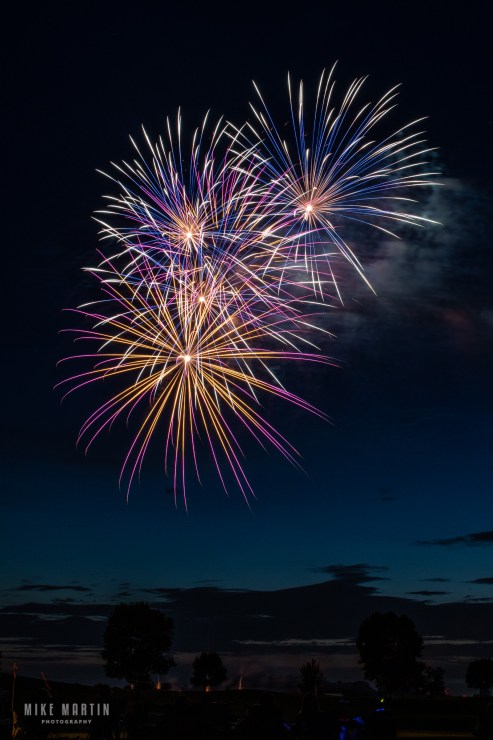
I asked him how he goes about choosing the best locations for photographing fireworks for the Fourth of July and other times.
“I’ve been lucky that in the Chicago suburbs there are many opportunities for superb fireworks displays,” he said. But of course, there was more to it than that.
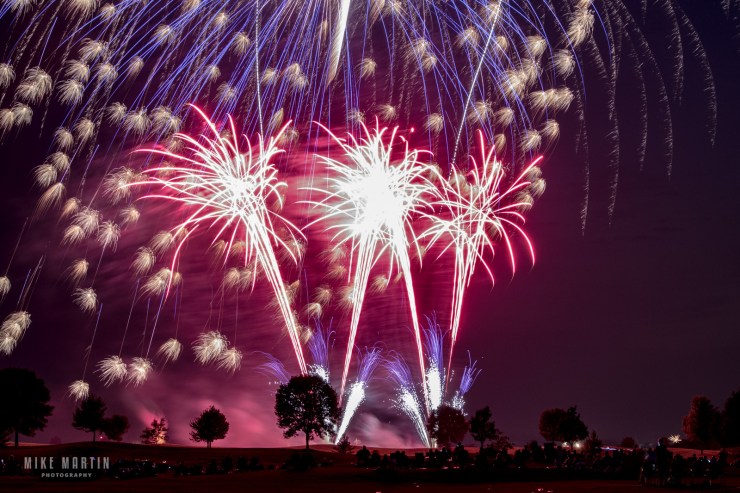
Mike manages to strike a balance between family and getting great photos as well. “As the Independence Day fireworks displays are often a family affair it is often a compromise between the ideal location and being near friends and family during the show. We’ve found a spot that is further away from where most of the crowds gather and where I also have a slightly elevated perspective.”
Do you need the latest and greatest camera for fireworks?
Mike discussed what sort of camera he uses. What he says is important for many to take to heart since we are continually inundated with advertisements imploring us to upgrade to the shiniest new camera.
“Any relatively modern DSLR or mirrorless camera is fine. When I got back into photography I started out with what I could afford which was a Canon T2i and while I’ve upgraded my cameras several times since then, the truth is that nearly any digital camera made in the last decade with a kit lens can capture amazing fireworks.”
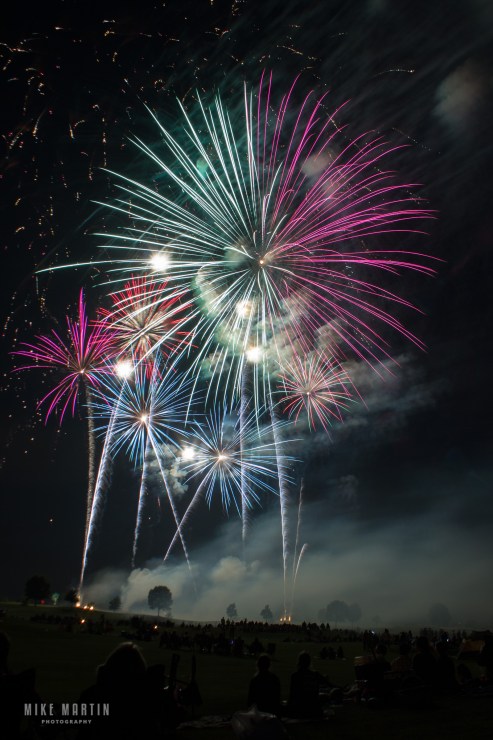
Lens choices
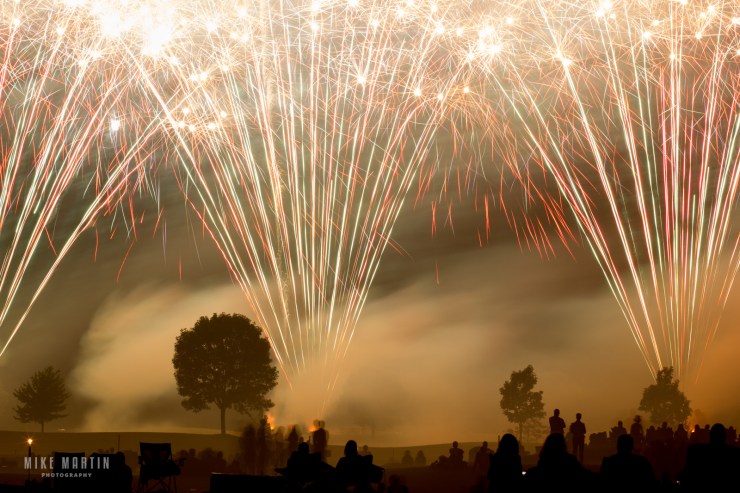
Mike also discussed what sort of lens he chooses. Notice again that what he mentions is modest. “A kit 18-55mm lens will likely give you the range that you need on a crop sensor camera. The exact focal length will depend on your location but generally speaking the wider the angle, the better. I’ve also found that using telephoto lenses and zooming in on some of the action can provide a unique perspective.”
Avoiding the shakes
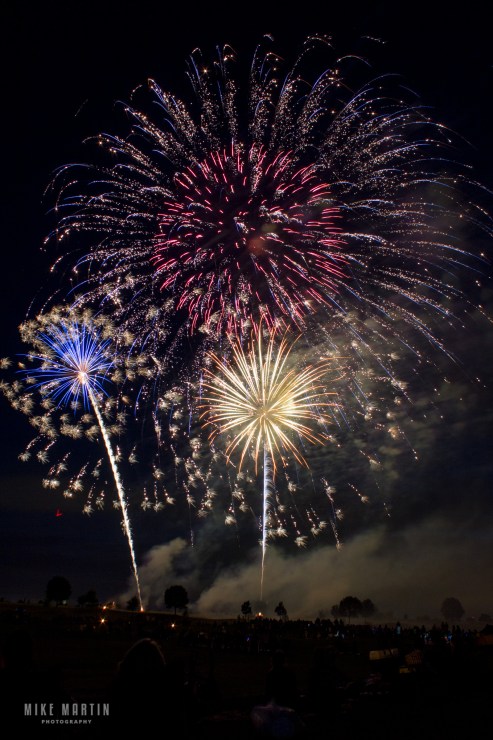
I asked Mike about other equipment he uses. “A high quality tripod is essential. Since these will be longer exposures you’ll need to be certain that the camera is completely stable.”
You also want to avoid vibrations from the camera. Mike says, “Ideally you want some type of wireless shutter release so you’re touching the camera once you’re set up. However, the built-in 2-second timer on your camera can also work in a pinch. Another option if your camera supports it is time-lapse. Simply have the camera continuously shoot from beginning of the show to the end.”
This last method can be done in a number of ways, including using an intervalometer, or simply setting the camera to Continuous Burst mode, then locking your shutter release so that it continually fires. This is also the way many people create star trails or time-lapse videos.

How to focus to achieve sharp fireworks images
Mike says, “Unlike typical night photography there is often plenty of light for focus as soon as the fireworks begin. Although you may initially be able to rely on autofocus, once you get focus you’ll want to switch your lens over to manual focus so it stays locked. In the darker conditions I use the Live Mode, located on the rear LCD display, and zoom in using the display and manually focus.”
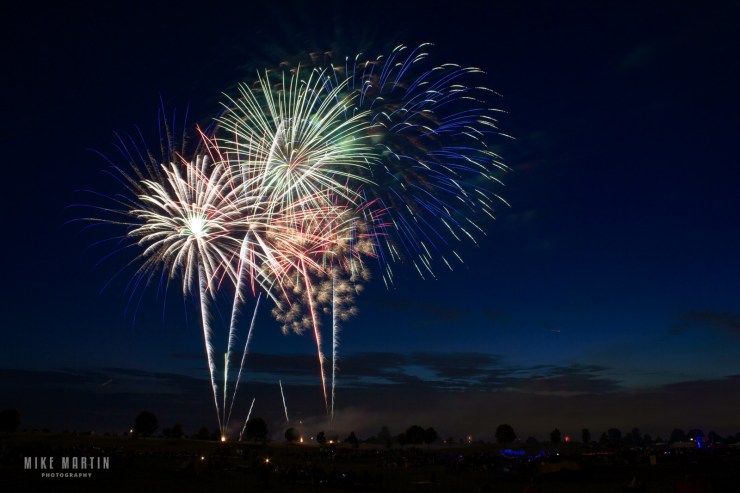
Camera settings
Many photographers like arriving early, getting set up and adjusting the camera settings. Also, many fireworks photographers prefer photographing the first part of the display, when there is less smoke.
Mike continues, “The real trick to photographing fireworks is capturing the event from the launch, through its initial burst, and all the way through the trail of light and colors afterward. By watching the fireworks and counting you can see that the event of just a single firework can easily be 5–12 seconds.
“In order to get these longer exposure times, you’ll need to keep a low ISO, somewhere around ISO 100–250, and to stop down the lens to f/8–f/11. These settings help you get the longer shutter speed times you need. Around eight seconds is a good place to start. During a finale or particularly busy part of the show, slightly shorter exposures may be needed.”
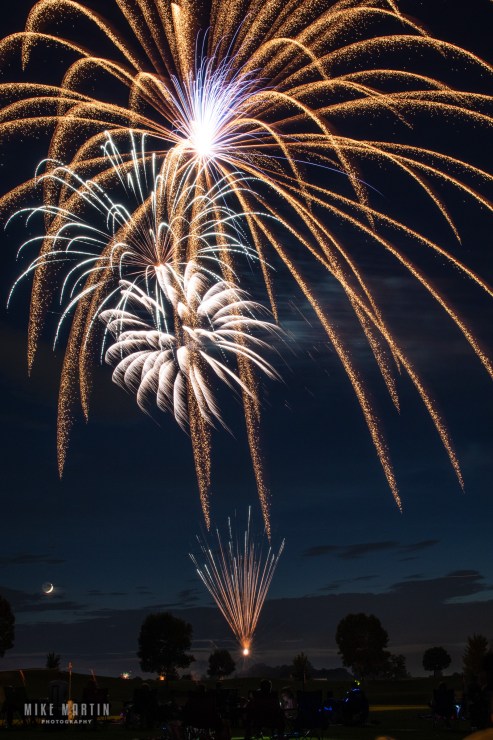
Random encounters
And the fascinating part of long exposure is that you frequently will not be sure what you’ll get when you open that shutter. No problem. Mike says, “[My] best advice is to just keep shooting. There is quite a bit of randomness during a fireworks display. Even if you open the shutter at the launch of a firework you don’t know exactly what you’re going to get.”
As usual, you may click on each photo to enlarge it and see the camera settings.
Mike Martin is not only known for his portraits. He’s also gifted with landscapes, wildlife, event photography, weddings, fireworks, city skylines, product photography and more. He has an exquisite eye for lighting and detail. Find out more about him by visiting his website.
Tell your story with the second annual Visual Storytelling Conference!
Experience four days of interactive, online training sessions featuring a range of educational content with experienced photographers and content creators. This free event kicks off with a series of technical boot camps to build essential skills, followed by live, online sessions on photography, video, business and social media. Join live from March 10-13, 2022!
